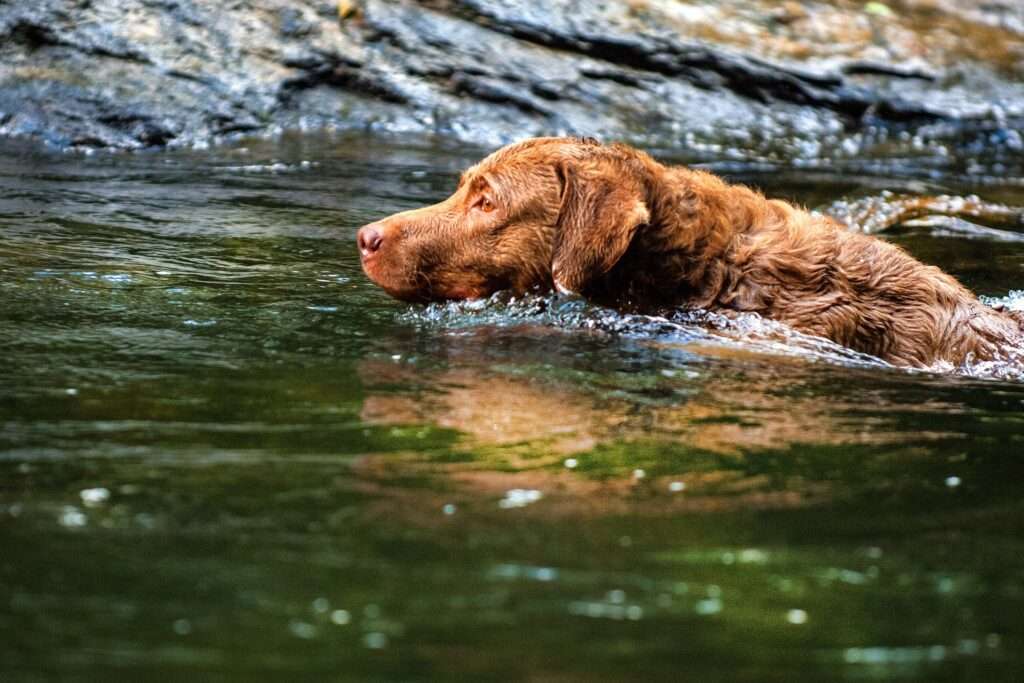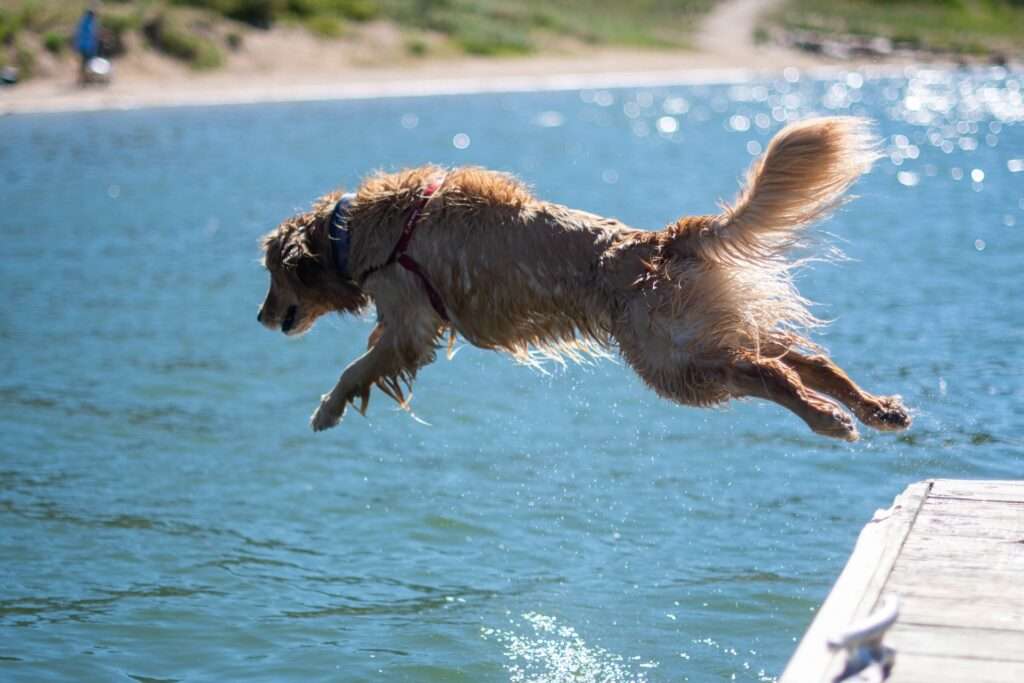What Dogs Have Webbed Feet: Unveiling 9 Fascinating Breeds!
As dog lovers, we often marvel at the unique physical features of our furry friends. One such feature that has piqued our curiosity is their webbed feet. Have you ever wondered why some dogs have webbed feet and what benefits they provide?
In this comprehensive guide, we’ll delve into the science behind webbed feet, explore the different breeds of dogs that have them, and learn why webbed feet are important for dogs.
The Science behind Webbed Feet
Webbed feet in dogs are not just a cosmetic feature; they serve a functional purpose. Dogs with webbed feet are better equipped for swimming, as the webbing between their toes acts like paddles, providing more surface area to push against the water. This allows web-footed dogs to swim faster and with more agility than dogs without webbed feet.
In addition to swimming, webbed feet also provide better traction on slippery surfaces, such as wet grass or mud. This makes web-footed dogs better able to run and play on soft surfaces, which is particularly useful for dogs that were originally bred for hunting or retrieving game. The webbing between a dog’s toes also helps to distribute their weight more evenly, which can reduce the risk of injury or strain.
Overall, webbed feet in dogs are an excellent example of how animals have adapted to their environment and evolved to meet the demands of their particular niche. In the following sections, we’ll take a closer look at some of the breeds that have webbed feet and explore how this unique feature helps them to excel in their intended tasks.
Breeds of Dogs with Webbed Feet
Did you know that some dog breeds have webbed feet, a unique physical feature that sets them apart from others? These webbed feet give them superior swimming abilities and increased traction on rough terrain, making them a popular choice for water activities and hunting. Listed below are well-known breeds of dogs with webbed feet and the benefits that they receive from this fascinating trait.
Portuguese Water Dog

While not all breeds of dogs have webbed feet, there are several that are known for this feature. One of the most famous breeds is the Portuguese Water Dog. This breed was originally bred to assist fishermen and has webbed feet that allow them to swim for long distances and retrieve fish from the water.
Newfoundland

Another breed known for its webbed feet is the Newfoundland. These gentle giants were bred for water rescue and have webbed feet that give them excellent swimming abilities. They also have a thick coat that helps to insulate them in cold water, making them well-suited to their original job.
Labrador Retriever

Labrador Retrievers are another breed that often have webbed feet. These popular family pets were originally bred for retrieving game and have webbed feet that allow them to swim and retrieve with ease. In addition to their webbed feet, they also have an otter-like tail that helps them to swim more efficiently.
Chesapeake Bay Retriever

Chesapeake Bay Retrievers are a breed of dog that were bred for waterfowl hunting. They have webbed feet that help them to swim through choppy water and retrieve birds. These dogs are also known for their strong and muscular build, which allows them to perform well in cold water.
Otterhound

The Otterhound is a rare breed of dog that was originally bred for hunting otters. They have webbed feet that help them to swim and navigate through rivers and streams. They also have a keen sense of smell, which is useful when tracking prey.
German Wirehaired Pointer

While the breeds we’ve mentioned above are well-known for their webbed feet, there are many other breeds that possess this feature. For example, the German Wirehaired Pointer is a breed of dog that was originally bred for hunting game in the water. They have webbed feet that help them to swim and retrieve game, and their wiry coat provides insulation in cold water.
Irish Water Spaniel

The Irish Water Spaniel is another breed that often has webbed feet. These dogs were originally bred for waterfowl hunting and have webbed feet that allow them to swim efficiently. They also have a distinctive curly coat that helps to insulate them in cold water.
American Water Spaniel

The American Water Spaniel is a breed that was developed in the United States for hunting and retrieving game in the water. They have webbed feet that allow them to swim and retrieve with ease, and their waterproof coat provides insulation in cold water.
Weimaraner

Finally, the Weimaraner is a breed of dog that was originally bred for hunting game on land. However, some Weimaraners also have webbed feet, which can be useful when swimming or walking on soft surfaces. They also have a sleek and muscular build that allows them to move quickly and with agility.
Why Webbed Feet are Important for Dogs
Webbed feet are crucial for dogs who spend time in or around water. They provide dogs with the ability to swim more efficiently and comfortably, making it easier for them to retrieve objects or rescue people in water. Additionally, webbed feet provide dogs with better traction on slippery surfaces, which is essential for breeds that hunt or navigate rough terrain.
Dogs with webbed feet also tend to have better overall agility, making them ideal for sports like agility training or flyball. Ultimately, webbed feet give dogs an incredible physical advantage, allowing them to thrive in a variety of environments and activities.
Caring for Dogs with Webbed Feet
If you own a dog with webbed feet, it’s important to take care of their paws to ensure they remain healthy and functional. Here are some tips for caring for your dog’s webbed feet:
- Keep their paws clean and dry: Wet and dirty paws can lead to infections and other foot problems. After your dog has been swimming or playing in the mud, be sure to thoroughly clean and dry their paws.
- Trim their nails: Long nails can cause your dog to splay their toes, which can lead to foot problems. Keep your dog’s nails trimmed to a healthy length to avoid this.
- Check for cuts or abrasions: Webbed feet can be more prone to cuts and abrasions, as the skin between the toes can rub together. Check your dog’s paws regularly for any signs of injury.
- Use paw balm: If your dog’s paws are dry or cracked, use a paw balm to keep them moisturized and healthy.
By following these simple tips, you can help keep your dog’s webbed feet healthy and functional for years to come.
Training Dogs with Webbed Feet

Training dogs with webbed feet requires some additional considerations, especially if the training involves water activities. It’s important to gradually introduce your dog to water and ensure that they are comfortable and safe before engaging in any water-related activities. Properly fitting life jackets can also provide added safety and buoyancy for your dog.
When training your webbed-footed dog, positive reinforcement and patience are key. Training should always be conducted in a safe and controlled environment, and your dog should always be supervised to prevent accidents. With the right training and guidance, dogs with webbed feet can excel in a variety of activities, from water sports to hunting and more.
Conclusion
In conclusion, webbed feet are a fascinating physical feature that has evolved in certain breeds of dogs to help them excel in aquatic environments and navigate rough terrain. Caring for dogs with webbed feet requires some additional attention, but the benefits they provide make it all worth it.
Whether you’re looking for a water-loving companion or a hunting partner, dogs with webbed feet are sure to impress with their unique physical abilities. With proper care and training, your webbed-footed dog can enjoy a happy and healthy life full of adventures.
Frequently Asked Questions
Q: Why do some dogs have webbed feet?
A: Webbed feet can be beneficial for dogs who work in and around water, such as search and rescue dogs. The webbing allows them to paddle faster and be more regulated in the water. Webbed feet can also make it easier for dogs to dig.
Q: Do all dog breeds have webbed feet?
A: No, not all dog breeds have webbed feet. Some breeds that commonly have webbed feet include the Labrador Retriever, Newfoundland, and Portuguese Water Dog.
Q: Can webbed feet cause any health problems for dogs?
A: Generally, webbed feet do not cause any health problems for dogs. However, if the webbing is excessive, it can lead to difficulty walking or running on hard surfaces. Additionally, dogs with webbed feet may be more prone to certain skin conditions between their toes.
Q: Can webbed feet help dogs swim better?
A: Yes, webbed feet can help dogs swim better by providing them with more surface area to paddle with.
Q: Are there any dog breeds with partially webbed feet?
A: Yes, some breeds have partially webbed feet, such as the Australian Shepherd and the Chesapeake Bay Retriever.
Q: Do all dogs with webbed feet enjoy swimming?
A: No, not all dogs with webbed feet enjoy swimming. Some dogs may be afraid of the water or simply not enjoy being in it.
Q: Can webbed feet help dogs retrieve objects from the water?
A: Yes, webbed feet can help dogs retrieve objects from the water by allowing them to paddle faster and with more control.
Q: Do webbed feet make dogs better at digging?
A: Yes, webbed feet can make dogs better at digging by allowing them to use their paws more efficiently.
Q: Can webbed feet help dogs walk on slippery surfaces?
A: Yes, webbed feet can help dogs walk on slippery surfaces by providing them with more traction.
Q: Can webbed feet cause any problems for dogs when walking on dry land?
A: No, webbed feet should not cause any problems for dogs when walking on dry land as long as the webbing is not excessive.




